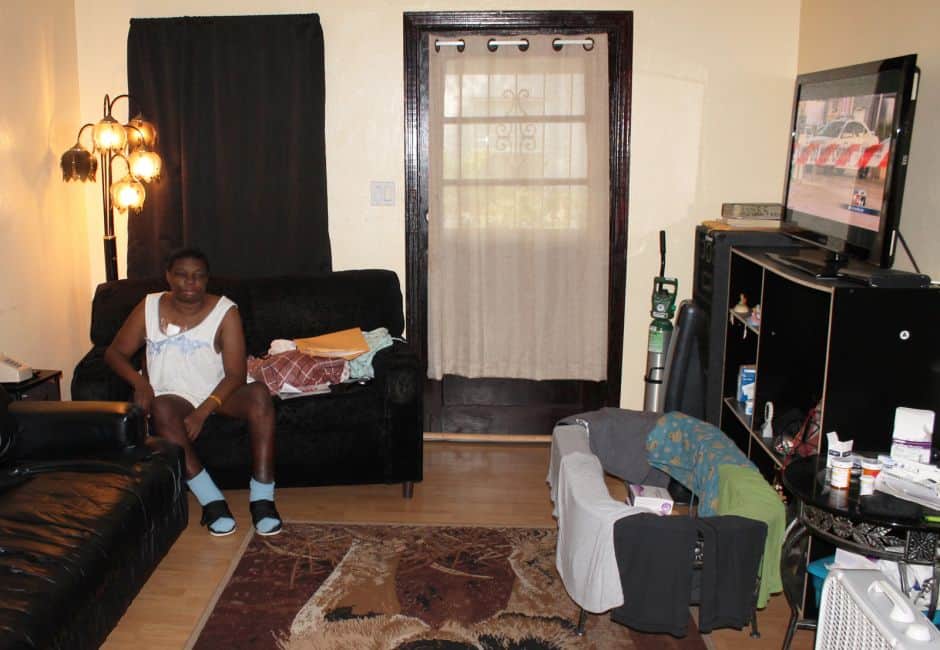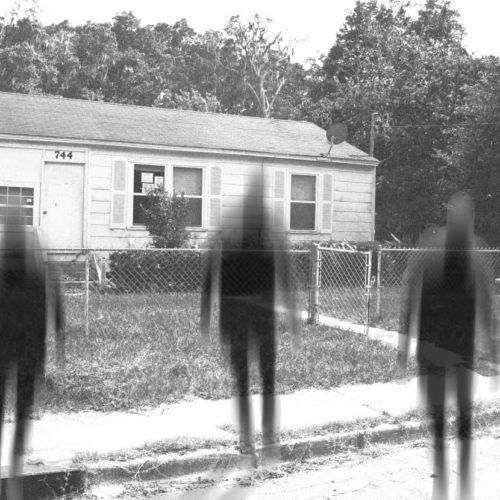Introduction

Kelly Young was stunned when she got a letter in January informing her that her disability payments, those of her daughter, and their Medicare benefits were being cut off. The Social Security Administration said she lied on her application when she failed to disclose she owned a house.
As far as Young knew, she didn’t own anything. Four years earlier, Bank of America informed her it was foreclosing on her tiny yellow ranch-style house in Jacksonville, Florida, after the 45-year-old mother of three fell behind on her payments. When Young got the bank’s letter, she didn’t fight.
“They said foreclosure, so we just up and left,” said Young, sitting in the darkened living room of her rental house in a nightdress that reveals the bandages from recent heart surgery and the tubing from a dialysis port. “I’m not going to sit here and let someone put me out. I’ve never been evicted.”
The problem is, Bank of America never followed through. Now, four years later, Young struggles to pay her bills while across town her house sits empty, strewn with trash and rotting under a leaky roof, collecting fines for code violations and unpaid taxes and fees related to the delinquent mortgage.
Young went five months without any disability payments and was living off the kindness of her landlord. In May, her benefits were restored, but she’s still fighting to get her 16-year-old daughter’s disability payments restarted. The developmentally disabled teen needs medication every day and has been getting by on samples provided by public health clinics.
Young’s case is particularly harsh, but not unique.
Jacksonville’s poor neighborhoods are dotted with abandoned houses stuck in foreclosure limbo. The so-called zombie properties are often uninhabitable because they’ve fallen into disrepair, and owners are unwilling to invest in fixing them up because, with the mortgage unpaid, the bank can always come back and foreclose again.
By cherry-picking which foreclosures they complete and which they ignore, banks are saddling individual borrowers with a permanent, inescapable debt while helping to create slums in already struggling communities. The vacant homes often attract drug dealers and squatters and bring down the value of surrounding properties.

(Alison Fitzgerald/Center for Public Integrity)
‘These houses are unsafe’
When you call the city of Jacksonville’s main phone number, the first option offered by an automated system is how to report blighted properties.
City Councilwoman Denise Lee last year established a blight subcommittee which meets every other week trying to deal with the properties and associated crime.
“These houses are unsafe. A lot of druggies come, they use the houses, they bring the property values down, [and the houses] get infested with rodents,” Lee said.
Driving around north Jacksonville, Allison Albert, a lawyer at Jacksonville Area Legal Aid who is representing Young, guides a tour of foreclosure despair. One neighborhood, ironically named Sherwood Forest after the place where the legendary Robin Hood hid out, features street after street of tiny ranch houses. On each block there are a handful of homes that are boarded up or clearly abandoned.
In front of one house is a sign spray-painted in red on a large sheet of plywood: “For Sale: $18,500 or best offer.” A storefront sign offers rent-to-own homes.
Young’s house is a tiny yellow box on a dead-end street. Old mattresses and furniture are scattered throughout the interior and the garage is strewn with trash, old shoes and Kilz paint cans.
She bought it to give her three kids some stability. She was so ill she feared she’d die while they were still young.
“I thought I was doing a good thing for my children, for my family,” Young says emphatically, punctuating the words with hand gestures. “I wanted to leave them something.”
The mortgage was $702 a month, which she could pay when times were good. But when her van died, the vehicle she uses to get to her dialysis treatments three days a week, she had to pay to fix it and couldn’t afford the mortgage.
Young doesn’t want the house back. She wants the bank to take it, and write off her debt, exactly what she thought they’d done four years ago.
Bank says no thanks
Young says she offered the bank a so-called deed in lieu — transferring the deed to the bank in exchange for writing off the debt —but the bank wouldn’t take it.
The court set the case for trial in April 2013 but sent notice to an attorney who no longer represented Bank of America. Because no one showed up in court, the judge dismissed the case. A year later, the bank successfully had the case reinstated. On August 1, it transferred the loan to another servicer, according to spokesman Richard Simon.
He attributed the long delays in Young’s case to the slow judicial foreclosure process in Florida and complications related to Young’s original lender which went out of business while under federal investigation.
He said the company took proper care of the house.
“Bank of America is committed to mitigating the potential for neighborhood blight created by abandoned properties,” he said in an email. “Our policy dictates completion of foreclosures and no charge-offs of loans on vacant properties.”
Still, Young’s little yellow house has joined the ranks of “zombies,” homes that sit abandoned for years and saddled with a pending foreclosure.
During the financial crisis, many homeowners walked away from their properties when they got their initial foreclosure notices, seeking to avoid being evicted, not realizing that the process could take years. Others would stay for a time but then move for a new job or to be closer to family.
Zombie foreclosures have become more widespread in recent years throughout the country, but are especially prevalent in Florida, where as of June 2, 48,630 homes in some stage of foreclosure sat vacant, according to RealtyTrac, a company that tracks foreclosure filings nationwide. That accounts for a third of the 141,406 vacant foreclosed properties nationwide.
Daren Blomquist, vice President of RealtyTrac says zombie foreclosures come in two forms. The first is the unintentional byproduct of Florida’s judicial foreclosure process, which can take months and result in “properties sitting in limbo,” according to Blomquist.
The second involves an intentional delay by lenders, who file a foreclosure case so they don’t lose the option when the statute of limitations runs out, but don’t move it forward because completing the foreclosure would not be financially viable.
“This type of foreclosure is more common in Cleveland and the rust belt cities, for example, banks not wanting to foreclose because of low values and little demand for buyers,” said Blomquist.
But it’s not just rust belt cities that suffer.
About a mile from Young’s house is the brown rancher owned by Phyllis Mainor.
In 2005 and 2006, Mainor took custody of her two grandchildren from her daughter, who was a drug addict. She was living on a low income and the additional children, both of whom had severe asthma, made it impossible for her to keep up the home, which contained mold. She moved out and rented the house to another couple for a year. When they moved out, she was unable to find another tenant. CitiMortgage filed a foreclosure action in July 2009.
In February, 2010, Mainor sent a three-page handwritten “hardship letter” to CitiMortgage asking for a deed in lieu of foreclosure as she was unable to fix up the property or pay the loan.
“I want to be able to continue to provide a safe and comfortable environment for my grandchildren,” she wrote to CitiMortgage. “Being able to qualify for a deed in lieu will alleviate some of the distress I have experienced during these unfortunate occurrences.”
Mainor also filed bankruptcy, and a judge discharged the debt so she is no longer liable for the payments.




Join the conversation
Show Comments